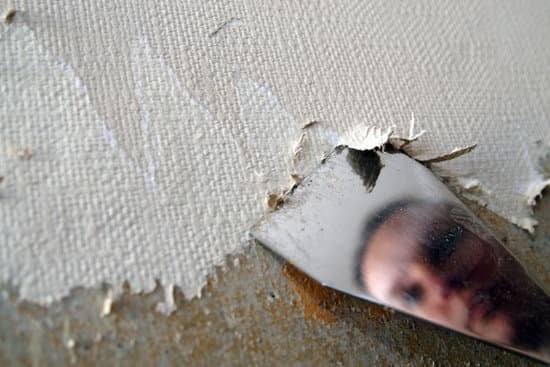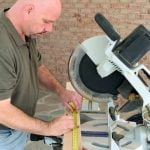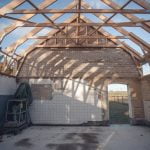Before putting your home on the market, it is common practice for homeowners to make various improvements or repairs to increase its appeal and value. However, did you know that some of these expenses may be deductible? In this article, we will explore whether improvements to your home before selling are deductible and delve into the potential tax benefits that they can bring.
When it comes to deducting home improvement expenses, it is important to understand what qualifies as deductible and what does not. Not all home improvement expenses can be claimed as deductions on your taxes. It is crucial to have a clear understanding of what qualifies in order to take full advantage of any potential tax benefits.
One key distinction is between regular repairs and capital improvements. Regular repairs are typically classified as routine maintenance and cannot be deducted. On the other hand, capital improvements are considered enhancements that increase your property’s value, such as room additions or a renovated kitchen. These types of improvements may potentially be deductible when it comes time to sell your home.
In the sections ahead, we will delve further into what expenses can be considered deductible, outline the criteria for qualifying for tax deductions, discuss proper documentation methods, address any limitations or exclusions that may apply, explore the potential tax benefits you can expect from deductible home improvements, and emphasize the importance of consulting with a professional tax advisor or accountant. By understanding these aspects fully, you can maximize any potential tax benefits while ensuring compliance with current tax laws.
So let’s dive in.
Definition of deductible expenses
When it comes to home improvements, it is important to have a clear understanding of what expenses can be considered as deductible. Deductible expenses refer to costs that can be subtracted from your overall income, reducing the amount of tax you owe. However, not all home improvement expenses are eligible for deductions. It is essential to know which expenses qualify and which do not.
Qualifying Expenses
To be considered as deductible, home improvement expenses must meet certain criteria. Generally, deductible expenses include those that add value to your property or prolong its useful life. This can include renovations or additions made to the property that enhance its overall quality, efficiency, or functionality. Some common examples of qualifying expenses may include:
- Remodeling or renovating a room: If you remodel a kitchen or bathroom to increase its appeal and functionality before selling, these expenses may qualify for deductions.
- Installing energy-efficient upgrades: Adding energy-efficient features such as solar panels, energy-saving windows, or insulation can significantly improve the value of your property while also potentially providing tax benefits.
- Landscaping improvements: Making enhancements to your outdoor space like installing a patio or improving the curb appeal can contribute to the overall value of your home and potentially qualify as deductible expenses.
- Repairing structural damages: While regular repairs may not be deductible, repairing significant structural damages, like fixing a foundation issue or replacing an essential component of the house’s structure like the roof or plumbing system may be eligible for deductions.
Non-Qualifying Expenses
On the other hand, there are certain types of home improvements that cannot be considered as deductible expenses. This includes routine repairs and maintenance tasks that are necessary for keeping your property in good condition but do not significantly impact its value or extend its lifespan.
Examples of non-deductible home improvement expenses may include:
1. Painting interior or exterior walls 2. Replacing broken tiles 3. Fixing leaky faucets 4. Regular cleaning services While these expenses are essential for maintaining your home, they do not provide any substantial increase in value or prolong the life of the property, therefore making them ineligible for deductions.
It is crucial to carefully review the IRS guidelines and consult with a tax professional to ensure you accurately identify which home improvement expenses can be considered deductible and which ones cannot. By understanding the distinction between qualifying and non-qualifying expenses, homeowners can make informed decisions when planning home improvements before selling their property and maximize their potential tax benefits.
Understanding capital improvements
Understanding the distinction between regular repairs and capital improvements is essential when it comes to determining the tax deductions available for home improvements. Regular repairs are considered routine maintenance activities that are necessary to keep the property in its current condition. These repairs are not deductible as they do not increase the value of the property.
On the other hand, capital improvements are substantial investments made to improve or upgrade a home, resulting in increased value, prolonged use, or adaptation of the property for new uses. Examples of capital improvements include adding a new room, renovating a kitchen or bathroom, installing a swimming pool, or replacing the roof. These types of improvements can be deducted as they enhance the value and functionality of the property.
To qualify as a capital improvement for tax purposes, the IRS has set certain criteria that must be met. Firstly, the improvement must be substantial and add value to the property rather than simply maintaining its existing condition. Additionally, it must be intended to last for more than one year and should not be an expense that would typically occur on an annual basis.
Homeowners should keep thorough documentation and records of all capital improvement expenses. This includes invoices, receipts, contracts with contractors or suppliers, and any other supporting documents. Proper documentation is crucial as it provides evidence of both the cost incurred and substantiates that the work done qualifies as a capital improvement.
Types of home improvements that may be deductible
Energy-efficient upgrades
One type of home improvement that may be eligible for tax deductions is energy-efficient upgrades. These improvements focus on reducing energy consumption and promoting sustainability.
Examples of energy-efficient upgrades include installing solar panels, upgrading to energy-efficient appliances, replacing windows with high-performance models, installing insulation, and implementing smart home technology. Homeowners may be able to claim a tax credit or deduction for these improvements, which can help offset the costs and potentially increase the resale value of their property.
Medical necessity modifications
Another category of home improvements that may qualify for tax deductions are modifications made for medical necessity. These modifications aim to accommodate individuals with disabilities or medical conditions by making their homes more accessible and functional.
Examples of medical necessity modifications include installing ramps, widening doorways, adding handrails or grab bars, installing wheelchair lifts or stair glides, and modifying bathrooms and kitchens for accessibility. To claim a deduction for these types of improvements, homeowners usually need documentation from a medical professional stating the necessity of the modification.
Home office renovations
If you use part of your home exclusively for business purposes, certain home office renovations may also be deductible. This includes improvements made to create a dedicated workspace within your home such as renovating or partitioning a room to serve as an office, adding built-in cabinets or shelves specifically for business use, upgrading electrical wiring or internet connections in the office area, or making necessary structural changes to ensure compliance with local zoning regulations.
However, it’s important to note that there are specific criteria that must be met in order to claim deductions for home office renovations, such as using the space regularly and exclusively for business purposes.
It’s worth mentioning that not all home improvements will qualify for tax deductions. For example, regular repairs and maintenance expenses are generally not deductible because they are considered ongoing costs associated with owning a property.
Additionally, any improvements made solely for aesthetic purposes, such as painting or landscaping, are unlikely to be eligible for deductions. It’s important for homeowners to familiarize themselves with the specific requirements and limitations set by the Internal Revenue Service (IRS) to determine which home improvements may qualify for tax deductions before deciding to proceed with any projects.
Qualifying for tax deductions
To qualify for tax deductions on home improvements, homeowners must meet certain criteria and fulfill specific requirements. Here is an outline of the key factors that determine eligibility for claiming deductions on home improvements:
- Primary residence: The home in question must be your primary residence in order to qualify for tax deductions on home improvements. Second homes or rental properties are typically not eligible.
- Capital improvements: Only capital improvements, as opposed to regular repairs or maintenance, are eligible for tax deductions. Capital improvements are those that add value to the property or extend its useful life. Examples include adding a new room, installing a swimming pool, or renovating the kitchen.
- Improvement-related expenses: Homeowners can usually deduct the cost of materials and labor directly related to the improvement project. This includes expenses such as purchasing building materials, hiring contractors, and obtaining permits.
- Personal use percentage: If you use a portion of your home for business purposes (e.g., a home office), you may be able to deduct a portion of the improvement costs proportional to the square footage it occupies in relation to the entire property.
To ensure eligibility and maximize potential tax deductions, it is important for homeowners to maintain proper documentation and record-keeping:
- Keep receipts and invoices for all improvement-related expenses, including materials, labor costs, permits, and contractor fees.
- Document any relevant before-and-after photos or appraisals that illustrate the impact of the home improvement(s).
- Maintain records of dates when improvements were made as well as any associated contracts or agreements.
- File Form 5695 with your federal tax return to claim residential energy credits for specific energy-efficient improvement projects.
It is worth noting that there may be limitations and exclusions that apply to deductible home improvements:
- Homeowners should be aware of any applicable thresholds or caps on deductible amounts set by local laws or regulations.
- Certain types of home improvements may only be partially deductible depending on their purpose. For instance, if an improvement serves both personal and rental purposes, only the portion that pertains to the personal use can be deducted.
- Deductible home improvements may have specific requirements in terms of timing. Some tax benefits may only apply if the improvement was made within a certain time frame.
To ensure proper understanding of deduction eligibility, homeowners are strongly advised to consult with a tax professional:
- A tax accountant or advisor can provide personalized guidance based on your specific circumstances and local tax laws.
- They can help determine which expenses are deductible and how to properly document and claim them.
- Seeking advice from a professional can help minimize the chances of making errors or submitting incomplete information when filing taxes.
By meeting the criteria, maintaining thorough documentation, and seeking professional advice when needed, homeowners can take advantage of potential tax deductions on their home improvements when selling a property.
Documentation and record-keeping
Proper documentation and record-keeping are essential when it comes to supporting deduction claims for home improvements before selling a property. Keeping thorough records of expenses and having the necessary documentation can help homeowners maximize their tax benefits and reduce any potential audit risks.
One key aspect of documentation is maintaining receipts and invoices for all home improvement expenses. This includes materials purchased, labor costs, permits obtained, and any other related costs. These documents provide proof of the expenditures made on the property and can be used to verify the amount claimed as a deduction.
In addition to receipts and invoices, it is also important to keep records of any contracts or agreements related to the home improvements. This includes contracts with contractors or subcontractors hired for the project, warranties or guarantees provided by suppliers or manufacturers, and any other relevant paperwork.
Maintaining a detailed record of the dates when home improvements were made is another crucial aspect of proper documentation. This allows homeowners to accurately track their expenses over time and determine when the improvements were completed. It is also advisable to take photographs before, during, and after the renovations as visual evidence of the improvements made.
Having organized and well-maintained documentation not only helps homeowners during tax filing but also provides protection in case of an audit by tax authorities. By being diligent about record-keeping, homeowners can confidently claim deductions on their eligible home improvements while complying with tax regulations.
| Type of Documentation | Importance |
|---|---|
| Receipts and Invoices | Proof of expenditures for materials, labor costs, permits, etc. |
| Contracts and Agreements | Documentation regarding contractors, suppliers, warranties/guarantees |
| Dates and Photographs | Record of when improvements were made, visual evidence of changes |
Limitations and exclusions
Limitations and Exclusions: Addressing Any Limitations or Exclusions That May Apply to Deductible Home Improvements
When considering home improvements before selling, it is important for homeowners to be aware of any limitations or exclusions that may affect their ability to claim deductions. While some improvements may qualify for tax benefits, others may not meet the necessary requirements. Understanding these limitations and exclusions can help homeowners make informed decisions about their home improvement projects.
One common limitation to keep in mind is the concept of “ordinary and necessary” expenses. In order for an expense to be deductible, it must meet this criteria. Ordinary expenses are those commonly associated with the type of property being sold, while necessary expenses are those that are helpful and appropriate but not extravagant. For example, replacing a broken window would likely fall under the category of ordinary and necessary, whereas installing a swimming pool could be considered excessive.
Additionally, it’s important to note that not all home improvements will result in immediate deductions. Some improvements may need to be depreciated over time instead of being deducted all at once. This means that the cost of certain improvements will be spread out over several years rather than claimed as a deduction in the year they were made.
Furthermore, there may be exclusions for certain types of improvements when it comes to claiming deductions. For example, luxury items such as high-end appliances or extravagant landscaping features may not qualify for deductions. It is recommended that homeowners consult with a tax professional or CPA to determine which specific improvements are eligible for deductions and which ones may have limitations or exclusions.
| Type of Improvement | Deductibility Status |
|---|---|
| Replacing a faulty roof | Generally deductible as a repair expense |
| Adding a swimming pool | Generally not deductible due to being considered an excessive improvement |
| Installing energy-efficient windows | May be eligible for tax credits rather than immediate deductions |
By understanding these limitations and exclusions, homeowners can make informed decisions about their home improvement projects and maximize the potential tax benefits they may receive when selling their property.
Tax benefits of deductible home improvements
Deductible home improvements can offer significant tax benefits for homeowners when they decide to sell their property. By making certain upgrades or renovations, homeowners may be able to reduce their taxable profit when they sell and potentially lower their overall tax liability. This section will explore the potential tax benefits that homeowners can expect from deductible home improvements.
One of the main advantages of deductible home improvements is the ability to offset capital gains taxes. Capital gains taxes are typically applied to the profit made from selling a property. However, by making qualifying home improvements, homeowners may be able to increase their cost basis and decrease their taxable profit. This means that they would owe less in taxes when they sell.
To better understand the potential tax benefits, it is important to highlight examples of specific deductible home improvements. Some common improvements that may qualify for deductions include energy-efficient upgrades such as solar panels or insulation installation, adding a new addition or construction project that enhances the value and functionality of the property, or renovating outdated systems like plumbing or electrical work.
It’s essential for homeowners to consult with a tax professional to fully understand which home improvements are deductible and how much of an impact they can have on their taxes. Tax professionals can provide expert advice tailored to individual circumstances and help ensure that homeowners take full advantage of any eligible deductions. By maximizing deductions related to home improvements, homeowners can potentially save significant amounts on their overall tax bill when it comes time to sell their property.
Consultation with a tax professional
Considering the complex nature of taxes and deductions, it is crucial for homeowners to consult with a tax professional before making any decisions regarding deductible home improvements. A tax accountant or advisor has the expertise and knowledge to navigate through the intricacies of tax laws and regulations, ensuring that homeowners fully understand their eligibility for deductions.
A tax professional can provide personalized guidance based on an individual’s specific situation. They will take into account factors such as income level, type of property being sold, and the nature of the home improvements made. By analyzing these details, they can help homeowners determine which expenses may be deductible and which may not qualify.
Furthermore, consultation with a tax professional can help homeowners avoid costly mistakes or potential audits. Tax laws are constantly changing, and it can be challenging for individuals to stay up-to-date on all the latest regulations. By seeking expert advice, homeowners can rest assured that they are making informed decisions while minimizing any risks associated with incorrect filings or unclear deduction claims.
Conclusion
In conclusion, it is important for homeowners to consider making improvements to their homes before selling in order to potentially benefit from tax deductions. However, it is crucial to understand what expenses can actually be considered as deductible and what cannot. Deductible expenses include capital improvements, which are distinguished from regular repairs by their permanent nature and capability of increasing the value of the property.
When it comes to specific types of home improvements that may be deductible, examples include adding a new room or bathroom, installing energy-efficient equipment, or making modifications for medical purposes. Homeowners must meet certain criteria and requirements in order to qualify for these deductions, such as using the property as their primary residence.
Proper documentation and record-keeping play a vital role in supporting deduction claims. It is essential to keep receipts, invoices, contracts, and any other relevant paperwork related to the home improvements. Additionally, consulting a tax professional is highly recommended to ensure understanding of eligibility and maximize the potential tax benefits.
Frequently Asked Questions
Can you write off home improvements before selling?
Generally, you cannot write off home improvements before selling your home. Home improvements are considered personal expenses and are not tax-deductible.
However, it is important to note that these improvements may increase the basis of your home, which can affect the amount of capital gains tax you owe when you sell. When you sell your home, any profit you make from the sale may be subject to capital gains tax, but there are certain deductions and exclusions available that could help reduce this tax liability.
What selling expenses are deductible on the sale of a home?
There are specific selling expenses related to the sale of a home that may be deductible. The most common deductible selling expense is real estate commissions paid to the agent who helped sell the property.
In addition, other expenses such as advertising costs, legal fees, title search fees, escrow fees, and closing costs may also be deductible. It is important to keep detailed records of these expenses and consult with a tax professional to ensure eligibility for these deductions.
Are home improvement costs deductible?
Generally speaking, home improvement costs are not directly deductible on your taxes in most cases. Home improvements are considered personal expenses and do not qualify as deductions unless they are made for medical purposes or for energy-efficient upgrades in some cases. However, it is important to note that certain qualified medical expenses related to home improvements might be eligible for deduction if they meet certain criteria set by the Internal Revenue Service (IRS).
For example, if you make modifications to your home for medical reasons such as installing ramps or modifying doorways for wheelchair access. These types of qualified medical expenses may be deductible if they exceed a certain threshold based on your income level and other factors. It’s always recommended to consult with a tax professional or refer to IRS guidelines for specific eligibility requirements regarding deductions for home improvement costs.

I’m thrilled to have you here as a part of the Remodeling Top community. This is where my journey as an architect and remodeling enthusiast intersects with your passion for transforming houses into dream homes.





